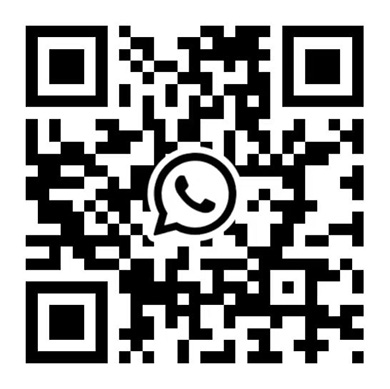The core of modern communication is fiber optic cables, which allow high-speed internet and data transfer. But now the question is: How do you ensure that these cables are functioning at their best? Well! Fiber cable testing is essential to detect faults, measure performance, and guarantee efficiency. Regardless of whether you are troubleshooting, maintaining, or performing an installation, knowing how to test the cables is vital. So grab your tools, and let’s learn the techniques that keep your fiber optic network reliable and strong.
Figure no 1 Fiber cable testing guide
1) What is Fiber Optic Cable Testing?
If you want to check if your fiber cables are working properly, then you need to conduct fiber optic testing. Fiber cables do not use electricity, instead, they carry light, which travels at an extremely fast rate! If the light encounters any issues, such as a small crack, dirt, or even a bend, it will not travel at an optimal rate, meaning that your signal may be lost. Thus, testing is crucial.
Figure no 2 Fiber optic cable testing
Moreover, keep in mind that cables should be tested after installation. Regular checkups, maintenance, and issue repairs also require testing. Thus, taking these steps will mean fixing and finding issues early.
In addition, testing indicates how much signal degradation occurs during transmission. Do remember! A quality cable should only lose approximately 0.3 to 0.75 dB in losses per connection. Therefore, testing ensures fast, clear, and strong connections.
2) Fiber Optic Cable Testing Equipment
Like every other component in a communication system, a fiber optic cable requires maintenance with the help of specialized equipment, which can trace problems and assess signaling. So, let’s go deeper.
i) Light Source and Power Meter
This is one of the most common tools you’ll use. The light source sends light through the fiber cable, and the power meter checks how much light comes out at the other end.
If any of the light that is supposed to reach the other end doesn’t come through, the cable has problems. This phenomenon is known as insertion loss. A good fiber link should have less than 0.75 dB loss per connection. If you find anything greater than that, action is required; a strong inspection must be done for the cable.
Moreover, this tool comes in handy when new cables are being installed, old ones are being repaired, or any routine check-up is done on performance.
Figure no 3 Fiber optic power meter
ii) Visual Fault Locator (VFL)
Sometimes, a cable may have bends, breaks, and cracks that are hard to see with the naked eye. That’s where VFL helps. The device sends a bright red laser light through the fiber. The light will escape if there is any damage and the light can be seen glowing even through the cable coating.
Thus, this tool helps to locate damage quickly and efficiently, which is particularly useful during quick checks or while working in the field.
Figure no 4 Visual Fault Locator
iii) Inspection Microscope
Dirt, no matter how small, obstructs the signal. Hence, the cable’s end requires utmost scrutiny. This microscope magnifies so you can check whether the connector is clean or scratched. Clean connectors ensure light passes through while dirty ones result in attenuation and a poor connection. In addition, it comes in handy in data centers where it is a must before plugging in any fiber.
Figure no 5 Fiber Inspection Microscope
iv) Fiber Identifier
It can be useful for checking whether a fiber is active, as you don’t need to disconnect it. The fiber identifier can help. A live signal is detected by bending the fiber slightly and measuring the light while not cutting or unplugging it. This is great for systems where downtime is not possible.
Figure no 6 Fiber optic Identifier
v) Optical Time Domain Reflectometer (OTDR)
This advanced tool shows you exactly where the problem is and how far down the cable it is. It works by sending light pulses into the fiber and checking the return of light reflection. We’ll explain OTDR more in the next section, but this is the basic information that is best for the precise locations of faults.
Purpose | Applications | |
| Power Meter | Signal loss detection | Performance testing |
| Visual Fault Locator (VFL) | Fault detection | Quick spot checks |
| Inspection Microscope | Connector check | Cleanliness testing |
| Fiber Identifier | Live fiber check | Non-disruptive testing |
| OTDR | Live fiber check | Long-distance testing |
Thus, with the right tools, you can test your fiber cable with confidence, fix problems fast, and make sure your network runs smoothly every day.
3) What is OTDR in Optical Fiber?
OTDRs play a critical role in the testing and analysis of optic cables. They serve functions as “light detectives” that help measure a fiber optic network’s performance and locate underlying issues. Such equipment can also be referred to as “Optical Time Domain Reflectometers.”
Figure no 7 OTDR
- How it works
An OTDR determines the condition of a fiber optic cable by sending light pulses down the fiber. Any faults, breaks, or bends encountered during this process reflect back some light toward the device. The OTDR analyzes the amount of light returned alongside the time it takes for the light to return. This information helps the OTDR determine the fault’s location and its nature. A simplified analogy would be a sonar system, except that OTDR employs light rather than sound.
- Purpose of OTDR
- Identifying faults: Locates breaks, bends, or other faults in the fiber.
- Measuring length/ loss: Determines the length of the fiber in addition to the amount of signal loss with distance.
- Generating reflectograms: Produces graphical diagrams that depict the performance of the fiber, advancing your understanding of the network’s state.
Besides all, an OTDR is accurate to within less than 1 meter, identifying problem areas with precise labeling, which makes the tool indispensable for accurate testing and troubleshooting.
4) How to Test Fiber Optic Cable with OTDR
Testing a fiber optic cable with OTDR can be done quite easily. Here, we will simplify it step by step so that you can follow it easily.
- Step by Step Process
Step 1) Connect Launch and Receive Fibers:
To begin with, you need to join two fibers together: the launch fiber, which sends the light pulses, and the receive fiber, which reflects the light. These fibers help achieve the accuracy the OTDR needs to measure the entire cable length.
Step 2) Set OTDR Parameters:
After that, set the OTDR’s parameters, which includes choosing the appropriate wavelength, usually 1310 nm or 1550 nm for long range tests, and setting pulse width (resolution clarity). For long-distance tests, use a longer pulse width.
Figure no 8 OTDR working
Step 3) Run the Test:
Once all settings and connections have been made, proceed with testing. The OTDR sends light pulses within the fiber and records the reflections. It generates a trace diagram illustrating the fiber’s performance.
Step 4) Analyze the Trace:
Now, evaluating the trace on the OTDR screen is the next thing to do. The trace will capture faults like splices, bends, breaks, and connector loss while capturing each issue’s distance as well.
- Tips Towards Better Accuracy
? Use Launch/Receive Cables: The use of these cables aids the OTDR in obtaining better, more precise readings, especially at the start and end of the fiber.
? Clean Connectors: Always clean the fiber connectors before testing to ensure no dirt or dust interferes with the outcome.
When using an OTDR, following the mentioned steps and tips will allow you to test the fiber optic cables accurately.
5) How to Test Fiber Optic cable without Tester?
There are some instances when you do not have an OTDR or other specialized testers. In these situations, basic methods can be employed to assess the condition of the fiber.
Alternative Techniques
- Flashlight or Laser Pointer (Basic): Even simpler is the use of a flashlight or laser pointer. For a quick and basic check, shine the light through the fiber to see if it can be seen on the other side. A blockage somewhere along the fiber is probable if the light does not reach the other end; however, this method is not very accurate.
- Basic Loopback Testing: As loopback testing is another easy method, it can be done by joining the two fiber ends so they make a loop. Then, check if the signal is sent back. If the signal is received at the far end, the cable is likely working. But remember, this doesn’t tell you much about network performance.
All of the above methods do not offer optimal performance; however, they focus on simplistic major actions.
6) Fiber Optic Cable Testing Standards
Like many other things in technology, fiber optic cables can be tested according to defined standards, which need to be followed for accuracy. Keep in mind that Standards ensure that cables are tested step-by-step. Moreover, this aids in confirming that the cables are being verified appropriately, which will be reliable in the future.
i) TIA/EIA-568 – Testing in Buildings
TIA/EIA-568 standard is very popular and aids in testing fiber optic cables in commercial buildings such as offices and schools as well as hotels. It defines installation procedures along with performance and the amount of signal loss permitted. For instance, it states that the loss at each connector should not exceed 0.75 dB. Following this guideline ensures that the operation of the network will be reliable.
ii) IEC 61280 – Measuring Light and Loss
IEC 61280 concentrates on how light, loss, and reflection are measured. It includes traits such as the type of tools to be utilized and the nature of the readings to be taken. Thus, following this rule guarantees that your test results on the functionality of your fiber will be valid.
iii) ISO/IEC 11801 – Full Network Testing
This is applicable for testing complete installations of structured cabling systems within a corporate office or a data centre. ISO/IEC 11801 incorporates all the preliminary tasks such as the cabling setup, tag setup, cable management, testing—everything as well as the performance evaluation. This ensures the installation of devices and systems enabling rapid data transfer in all areas.
Following these standards will minimize errors, accelerate troubleshooting, and improve system design and performance. Also, you can certify your work, which means you’ve done everything in a standard way!
7) Conclusion
All in all, every fiber optic network requires testing to guarantee performance and reliability. OTDRs and specialized testers are perfect for the task. Other methods like Visual Fault Locators and loopback tests also have their place, but they are limited. Each task has a unique set of requirements that must be dealt with to properly standards. Proper documentation aids in the management of the fiber network’s efficiency and longevity.
Moreover, you can visit DEKAM fibers, China’s renowned custom fiber optic manufacturer. At DEKAM, you will also get professional assistance, and you can also read the blogs related to fiber optic cables.




